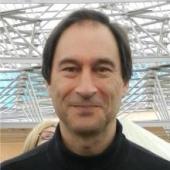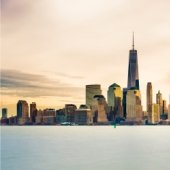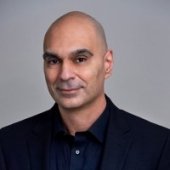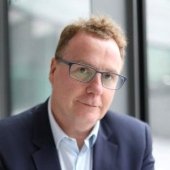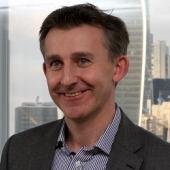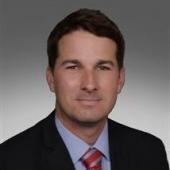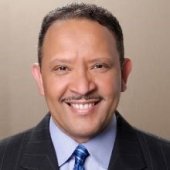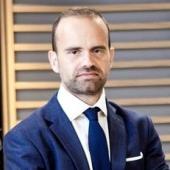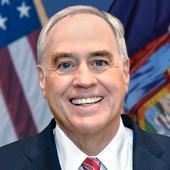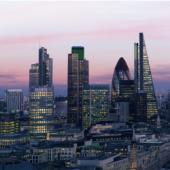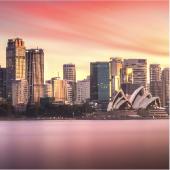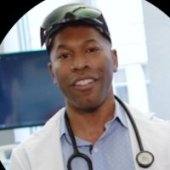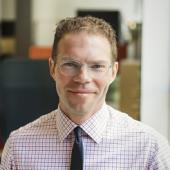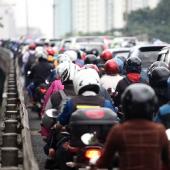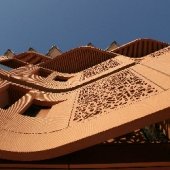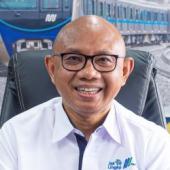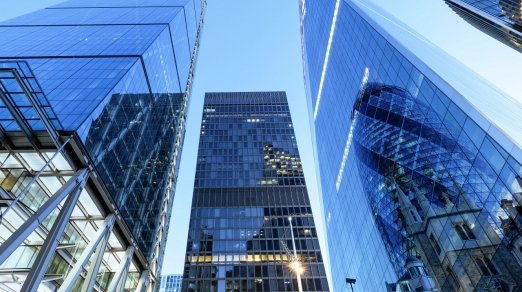Lessons in leadership from a former mayor: Successful cities of the future
IN BRIEF
- 6:30 – The AV club: “A full integration of autonomous vehicles is probably more than a decade away, but when it comes it will have a drastic effect on how cities function. Nothing is going to change the design and use of a city more than the autonomous vehicle. I just think the integration is going to be messy."
- 13:20 – From a branding perspective: “An NBA team gave us sort of a superficial level of equality with cities we had never been mentioned with before. People think of you differently because they know the NBA doesn’t choose its cities randomly and that special things must be happening, and indeed, they were."
- 16:40 – Listen to young people: “Highly educated twenty-somethings are going to drive the technology that’s going to lead our economy over the next generation and beyond. Older people vote, and you’ve got to be able to convince older people to build a city for younger people. A lot of mayors miss out on that."
“One of the things you’ve got to do is convince older people to build a city for younger people.” One of the most successful city mayors in the U.S., former Oklahoma City mayor Mick Cornett, shares insights on how to build a city that’s modern, attractive, successful and healthy. Watch Mayor Mick in conversation with Joe Kornik, Editor-in-Chief of VISION by Protiviti.
Read transcript
LESSONS IN LEADERSHIP FROM A FORMER MAYOR: SUCCESSFUL CITIES OF THE FUTURE - Video transcript
Joe Kornik: Welcome to the VISION by Protiviti interview. I’m Joe Kornik, Director of Brand Publishing and Editor-in-Chief for VISION by Protiviti, a quarterly content initiative where we put megatrends under the microscope and look into the future to examine the strategic implications of big topics that will impact the C-Suite and executive boardrooms worldwide. In this, our first topic, the Future of Cities, we’re exploring the evolution urban areas are undergoing post-COVID and how those changes will alter cities over the next decade and beyond. We’ve got a great guest today. Mayor Mick Cornett, served as the mayor of Oklahoma City from 2004 to 2018, and was re-elected three times; once by an 88% margin. He has been a proponent for urban issues and initiatives such as rapid and mass transit, economic diversification, urban renaissance, and civic beautification. Cornett’s most recognizable achievement as mayor was the successful lobbying that resulted in Oklahoma City’s first professional sports team, the NBA’s Oklahoma City Thunder. He also passed a $777 million quality-of-life infrastructure program. He gained notoriety for putting Oklahoma City on a diet and transformed its infrastructure to encourage walking and biking. Meanwhile, under Cornett, the economy was humming. The month he left the office, Oklahoma City was named the top city in the U.S. to start a business. It’s no surprise that awards and accolades followed. In 2012, Newsweek named him one of the five most innovative mayors, and Fortune Magazine ranks him 25th on its list of the World’s 50 Greatest Leaders in 2018. I’m thrilled to be joined today by Mayor Mick Cornett. Thanks so much for being here today.
Mick Cornett: It’s great to be here. Thank you for asking me to join you.
Joe Kornik: Such an impressive resume, mayor, and series of accomplishments in your 14 years as Oklahoma City’s mayor. It really was and continues to be an extraordinary transformation for the city. In many ways, you were a visionary. So, I’ll start with an easy question. Back in 2004, now this is only nine years removed from the bombing at the Federal building, did you ever imagine you could have the kind of staggering success that you did as mayor of Oklahoma City?
Mick Cornett: It would have been hard to foresee all of the things that happened to us but I do think that I knew my predecessors had done a lot of the right things. We had invested in the core of the city. We had invested in the K-12 education. I felt like one of the big stumbling blocks was just our own citizens didn’t really believe in themselves. We’d come through an economic collapse of the ’80s and the emotional impact of the bombing in the ’90s, and I think we needed a boost in civic pride. We also had really no identity nationally or worldwide. The world had kind of forgotten about us and, if they did think about us, it was only it terms of a tragedy. So, I think we had been branded by the images of that 1995 bombing and you can’t build an economy on sympathy. So, I think we had some challenges trying to bring outside capital into the community, trying to get people willing to invest, and I pride myself on being a communicator and building on positive energy, and we started from there, and the brand of the city had to be addressed sooner rather than later.
Joe Kornik: Yes, we’re going to get into branding in just a minute but before we do that, I’ve heard you say Oklahoma City was built for the automobile and relied too heavily on it. I know that was one of the key things you noticed when you first took over. I think this is a problem actually in many cities—probably the vast majority of cities, to be honest. What can be done about it? How did you address it in Oklahoma City and I’m curious how you think autonomous vehicles fit into the future of the city’s overall infrastructure planning?
Mick Cornett: Well, most western cities in the United States were built in the 20th century, which means they were built around the automobile and the use of interstate highways and suburbia, and people commuting in and out of a downtown core. In Oklahoma City, we were an extreme case in that. I joked that if you were a car, it was the perfect place to live, because it seemed like every decision we made from the civil engineering standpoint was to make it easier to be in your car, and we did a really good job. I mean, traffic congestion was almost non-existent. You could live 20 miles outside the city and be downtown in 20 minutes. You could get a speeding ticket during rush hour. It was an amazing place if you wanted to live in your car but there was a cost to that. We had virtually no sidewalks. We had not invested in jogging and biking paths. The health of our community was suffering from it. I really just went to our civil engineers and challenged them verbally. I said, “We have built this city around the car, let’s take a new perspective. Let’s start building it around people and let’s see how it looks different.” From there, it was amazing to me just how enlightened our civil engineers seemed to be and all of the different ways and the funding mechanisms we were able to use to build hundreds of miles of new sidewalks, jogging and biking trails, and just really reinvent the inner city. We did a complete makeover of the infrastructure inside the city. So, streetscape projects, fully sidewalk, on-street parking, and so our entire downtown grid took a complete overhaul in a span of just a few years. The city looks and feels different and young people have noticed.
Joe Kornik: Right, and you can’t use sidewalks if you don’t have them, right? I’m curious, just your thoughts quickly on the future of the autonomous vehicle and how you think that will impact urban settings?
Mick Cornett: Well, I think first of all, you’ll see autonomous vehicles on our interstate highways, I think very, very soon. I think long haul trucking, I think, is a perfect use. We have, for years, been thinking that it would start integrating into our urban cores sooner rather than later. The longer it takes, the more I realize just how tough that is to try and integrate. So, I think a full integration of autonomous vehicles is maybe decades away and nothing is going to change the design and the use of a city more than the autonomous vehicle. I just think the integration is going to be very, very messy. But, with it comes a completely new way of thinking about parking lots and land use and interacting with the pedestrians. It’ll have a drastic change. I just don’t think it’s coming very, very soon.
Joe Kornik: Got you. So, all of those bike paths that you put in, all of those walking paths served their purpose. You received a lot of notoriety when you first started for putting Oklahoma City on a diet early on. I know it even got you a seat next to the First Lady at the 2010 State of the Union Address, and then invite on to the Ellen DeGeneres Show. So, talk to me a little bit about that effort and why you launched it and ultimately, how it led to some of those design and planning changes that we saw on Oklahoma City?
Mick Cornett: Well, when I was first elected mayor, I was trying to build pride in our community and draw attention to our city from around the country and so I started talking about what I call the list. They were putting out things in magazines and on the internet about best city to do this and best city to do that. We were starting to show up on a lot of those lists and we’ve never really been on lists before. So, it was a big deal for us to be like number 15 in “the best place to start a business” or number 22 in “best downtown” but then came out the list of the most obese cities in the country and there we were. I was embarrassed by it, didn’t really know how to act. I got on the scales, realized that I was a part of the problem. I started losing weight. I lost a pound a week for about 40 weeks and along the way, that’s when I started examining our city’s infrastructure and how it had been built around the automobile and the unhealthy nature of the culture of our community, and so that was really the enlightenment that I needed to kind of try and lead the city into understanding that the infrastructure had an impact on our health and that really, weight loss was largely resting on individual shoulders. I mean, people just got to understand they’re going to need to eat differently, and eat less probably, but certainly eat differently. So, the idea of putting the entire city on a diet was to draw attention to it, to create a splash and more than anything, to start a conversation because obesity seemed to be a subject in our community that people didn’t want to discuss. It seemed a little bit too invasive and a topic that even our civic leadership didn’t want to bring up, and I forced the conversation on it and that ultimately led, I think, to the passage of several initiatives that allowed us to change the infrastructure.
Joe Kornik: Right. We saw during the pandemic where there were bike paths, where there were walking paths. I mean, there were some of the most crowded places, certainly in my town, people were really anxious to get out and to use those public spaces but of course, they can’t use them if they don’t exist. So, certainly something for planners, I think, to keep in mind. You mentioned making all of those lists. I mean, that goes into sort of a city, the overall branding, and earlier on you sort of alluded to branding. I know it’s been a big focus for you and I’m not sure that enough mayors or city officials focus on it. It’s a sort of a new way of thinking, I think, isn’t it? Cities need to sell themselves and highlight maybe what makes them great and you did this by selling the NBA on Oklahoma City’s potential. That couldn’t have been easy. So, talk to me a little bit about branding a city and how important you think that would be for the future success of all cities?
Mick Cornett: Well, what I noticed when I was speaking nationally about Oklahoma City in those early days was when I said the word Oklahoma City, people had this flashback, this vision of the bombing, and those horrific images of that day. I thought to myself, I’ve got to get them to have a more positive image of Oklahoma City. I realized, from my background in sports broadcasting, that probably nothing could change the image of the city more quickly than to get a major league franchise. So, I started flying to New York to talk to the commissioners of the NBA and the NHL, trying to draw attention to the idea of our arena, which had just been recently constructed to be a home for an NHL or an NBA team. I wouldn’t get anything very far. The NBA Commissioner David Stern told me he did not have a team for me. He said he’d try to help me with a hockey team. He really enjoyed my passion for what I was trying to do and then Hurricane Katrina hit in the fall of 2005. I called Commissioner Stern and he said, “I didn’t call you right back because I knew which you wanted.” Lo and behold, in a matter of weeks, we had relocated the New Orleans franchise to Oklahoma City, which inadvertently gave us a trial run to prove if we could support an NBA franchise or couldn’t. Our business community and our fanbase knocked it out at of the park. We sold out every game. We led the league in sponsorships with only a six-week notice before the season started and, at that point, it seemed inevitable that we were going to wind up with a franchise. As it turned out, some of our business leaders went and bought the Seattle franchise and when they couldn’t get an arena deal there, they were free to move the team to Oklahoma City.
Joe Kornik: Do you think that the whole branding piece is something that other mayors or other leaders of cities around the world should be more focused on? It doesn’t seem like they view that particularly as maybe part of their role.
Mick Cornett: Yes. Well, it seems like your brand is what it is and it can’t be changed. What I noticed was a lot of cities’ brands were determined by pop culture, by being mentioned in a song or in a sitcom. I mean, think of the show Frasier from that era and it was in Seattle. Even though I don’t think the show was filmed in Seattle, that was the image you have. The same thing when you talk about the Upper West Side and Seinfeld. Oklahoma City was just kind of forgotten city. People just didn’t ever think about us and you can’t suddenly try to get investors to come in and invest in your city when it’s a place they are not used to going to or not used to even thinking about. An NBA team gave us sort of a superficial level of equality with cities we had never been mentioned with before because, to a certain extent, you are who your sports teams play, and we were playing Amarillo, Wichita, Little Rock, which are all fine cities. That’s who we’re associated with. Then suddenly, seemingly overnight, we were associated with Chicago and Los Angeles, and New York, and Dallas. All of a sudden, we have a whole new group of peer cities and people start to think of you differently because they know the NBA doesn’t choose its cities randomly. They don’t just throw a dart at a map and say we’re going to put one there. They knew if Oklahoma City was going to have an NBA team, that special things must be happening and, indeed, they were, and this allowed us to draw attention to it.
Joe Kornik: Right, and we shouldn’t overlook the NBA franchise was a huge piece of this. We shouldn’t the work that you are doing for the residents of Oklahoma City with all of that public policy things that you put in place. It seems some cities have a difficult time putting the longer-range plans and the motion. There’s always been sort of shifting political climate, and leadership changes quickly. I mean, you led the way the successful passage of MAPS 3 initiative, which was eight quality of white capital projects in Oklahoma City over a decade. I think you were unique in that you had a chance to see a lot of those plans come to fruition because you were there for so long and re-elected so many times. Any secrets for how you can make that happen? I mean, it seems to me that that’s a huge factor to a city success.
Mick Cornett: One advantage that we’ve had in Oklahoma City is we’ve had clean handoffs between mayors. My predecessors had done good work and I made sure that I completed their priorities and then added my own along the way. Then lo and behold, when I stepped out of office three years ago, my former chief-of-staff became the new mayor and he’s doing a wonderful job in implementing a lot of the strategies and initiatives that I started. I think the citizens really do notice when the elected officials and the leadership of the city get along and that positive energy can continue to build on itself. If you stop and start every time you change mayors, you’ll never really going to get very far because you’re always stopping and starting over again, and so I do think that clean handoff between administrations has been very, very helpful and indeed, by staying at office 14 years, I was able to see a lot of the things that I thought the city needed to become accomplished. Building a city is like a journey where you’ll never reach your destination. You’re always working on things and I was proud of what we accomplished but I still believe the best days of the city are yet to come because, at the end of they day, what we’ve done is create a city for highly educated 20-somethings and they are moving in, and they will drive the economy in ways we can imagine today.
Joe Kornik: Right, which sort of brings me to my final question, and you wrote the book on it literally. I see it over your shoulder there. What is next for cities? What should leaders of cities worldwide be focused on right now and what do you think are some of the keys to successful cities of the future?
Mick Cornett: Well, be listening to young people because, as I mentioned, highly educated 20-somethings are going to drive the technology that is going to lead our economy in the next generation and beyond. So, be mindful of that. One of the things to keep in mind is, on election day, older people vote and so one of the things you’ve got to do is convince older people to build a city for younger people. That’s not an easy sales pitch ordinarily, but that’s the goal and I think a lot of people miss out on that. Young people who are moving into Oklahoma City, we have in migration from Texas and California, things that we’ve never really had before, they seem to appreciate mid-size cities that don’t have traffic congestion, have a low-cost of living, and have an abundance of fresh water and clean air. The quality of life in a city is a higher priority for the millennial generation and the people coming in just behind it than it was for my baby boom generation. This group of people wants different things and they want a quality of life in a city where it’s healthy and education is prioritized and they can imagine a life that’s hassle-free and, at the same time, you’re not spending all your time in your car.
Joe Kornik: [Laughter] Right, right. Thank you so much for the time today, mayor. I really appreciate it. Congratulations on all the success and keep up the good work. I know you’re out there advocating for better cities in the future and certainly, we need your voice to help of guide that conversation. Again, thank you so much for being a part of VISION by Protiviti’s future of cities initiative and I really appreciate it.
Mick Cornett: Well, you’re welcome. These are my favorite topics so thanks for asking. [Music]
Close transcript
Did you enjoy this content? For more like this, subscribe to the VISION by Protiviti newsletter.
More on FUTURE OF CITIES
Add a Comment
Comments


